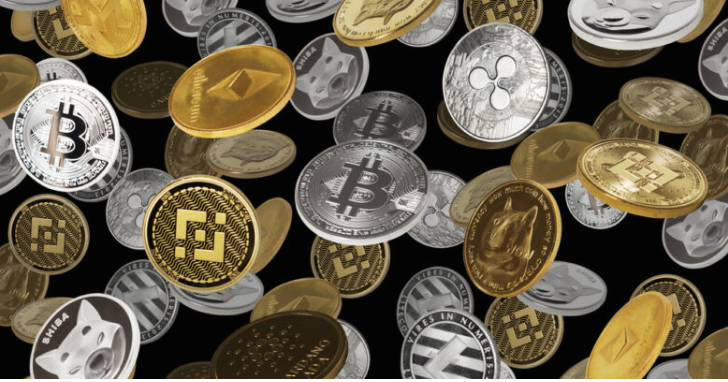Introduction
Nowadays, everyone has access to a smartphone and a functional internet connection. Social networking platforms are without a doubt the most popular applications nowadays. A social media account has been created by everyone with a phone.
The internet was not as widely used or accessible a decade ago as it is now. Blockchain and cryptocurrency are the next stage of technical development following the success of the internet. Right now, the world is filled with a huge number of cryptocurrencies.
How do digital currencies work?
A computerized depiction of money or exchange of value is what digital currencies are. However, because they can come in a variety of sizes, shapes, and configurations, it may be challenging for a novice to tell them apart. Celebrities and social media influencers are actively promoting these digital currencies as a viable investment choice.
But today’s digital currencies come in thousands of variations. It’s crucial to initially educate yourself about the many varieties if you’re going to enter the market. Digital currencies can be categorized and grouped based on a variety of elements, including their origin, use cases, and technological characteristics.
Are There Differences Between Digital and Paper Money?
If digital currencies differ from paper money or not is one of the most frequently asked questions by those unfamiliar with the idea. The majority of the time, digital currencies do not serve as a benchmark or a substitute for fiat money, is the answer. The ability to manage and print money is a reserve held by the central bank in the majority of nations.
In the meanwhile, sources issuing digital currencies are typically not recognized or connected to a central bank. As a result, a digital currency is typically not a substitute for traditional currency or any other kind of legal tender in the area. The fact that digital currencies work to undermine the government’s monopolistic control over the financial lives of its population is one of their key selling points.
The value of virtual currencies
Why should I invest in a digital currency that is issued by a private company is another crucial question that people ask. There are numerous reasons to do this. Numerous cryptocurrencies can be used as a means of value storage. It means that while a nation’s fiat currency’s value is declining, its residents can stop their losses from depreciating by investing in cryptocurrencies such As bitcoin and Ethereum.
The business strategy of the company producing the token is a key factor when deciding whether to invest in cryptocurrencies. A cryptocurrency project’s token value is likely to rise when it can offer consumers worthwhile services, which could lead to increased revenue for the project’s holders. It is important to keep in mind that each type of digital currency has a unique growth potential, so before investing any money in one, carefully review its classification.
What Sets Cryptocurrencies Apart from One Another?
From their early paper money counterpart, cryptocurrencies have advanced significantly. Unlike paper money or actual coins, cryptocurrencies are not found in the real world. Software like cryptocurrency exchanges, digital wallets, and other applications are required by users who want to hold, buy, or sell cryptocurrencies.
In order to safeguard their accounts from outside intrusion or hacking efforts, these applications let users create accounts that are secured by a seed word. With the use of built-in data metrics, these accounts enable users to buy digital currencies from a variety of vendors and display their account balance.
Finding out how different forms of digital currencies are categorized according to their origin, utility, and functions is another technique to distinguish between them.
Coins and tokens are what exactly?
Coins and tokens are two terms that are frequently used interchangeably in relation to digital currencies. However, these terms actually refer to different things in actuality. Here are some details on the fundamental difference between coins and tokens:
Coins
It is common for a blockchain to issue a single coin, which serves as its primary currency. Coins have to be mined, and they also have many similarities to regular money in terms of design and use. Typically, a coin’s infrastructure is also self-sufficient. Coins are a form of fiat currency that can be used as a medium of exchange or as a payment method.
An additional benefit of coins is their ability to be used as an investment option for digital currency traders and investors. Coins are sometimes employed as a monetary unit to keep track of the goods and services that have been provided.
To illustrate what a coin looks like, consider Bitcoin. When it comes to native blockchain, it’s the standard product for making payments using it. Many businesses and individuals use Bitcoin as a form of currency and as a means of storing assets and making investments. Many consider Bitcoin to be the first cryptocurrency. Altcoins (alternative coins) describe all other digital currency coins that are not Bitcoins.
Tokens
Coins, on the other hand, can only be issued by a blockchain that already has a primary digital coin. The Ethereum blockchain provides a nice illustration of a token. Ether, or ETH, is the primary currency of the Ethereum blockchain. Many dApps built on Ethereum have created their own currency, though.
Tokens include all of the Ethereum-based dApps’ secondary coins and other digital assets. Unlike Ether, these currencies aren’t part of the Ethereum blockchain. However, because of its ETC-20 standards, all of these currencies can exist on the Ethereum network.
Tokens, as opposed to coins, are more versatile in their application. In addition to granting users access to a service, these tokens can also be used to provide them voting privileges, verify financial transactions, serve as proof of ownership, or even be staked. Tokens, like currencies, can serve as a medium of exchange as well as an investment vehicle.
Coins of Various Design and Size
There are an infinite number of cryptocurrency coins to choose from. Innovation in the field is being introduced in new methods by the developers. However, if one understands the coin’s primary function or use case, it is feasible to further categorize them. The following are some of the most frequent coin types:
- Coins of Meme
- Stablecoins
- Coins for Privacy
Coins of Meme
The meme coin is one of the most popular coin varieties on the market. While some meme coins are created to poke fun at the bitcoin industry, the majority are simply satires or parodies. Using popular online memes as inspiration, these meme coins are designed to make people chuckle. Nevertheless, investors in digital currencies have begun to use them as a viable investment alternative.
If you’re looking to invest in meme coins, it’s worth noting that they entail a significant degree of risk and sometimes depend on market speculation. Aside from their lack of utility and volatility, meme coins tend to be more volatile than other cryptocurrencies. Dogecoin and Shiba Inu token are two of the most popular meme cryptocurrencies.
Stablecoins
As the name suggests, stablecoins are digital currencies that offer their customers a constant or stable price. The entire supply of the stablecoin is usually tied to a reserve or a fiat currency, such as the US dollar, in most circumstances Stablecoins have been increasingly popular among digital currency investors in recent years, and crypto exchanges are taking notice because of this demand.
Stablecoins are most useful since they provide a way for cryptocurrency users to convert fiat currency. For the most part, consumers are unable to directly exchange their cryptocurrency balances for fiat currency. To avoid losing their positions in volatile markets, investors choose to convert their crypto deposits into stablecoins and keep their exchange portfolios intact. Stablecoins like PAX, USDT, and USDC are just a few examples.
Coins for Privacy
The phrase “Privacy Coin” implies that these currencies secure their users’ identities. Even if they are accessible online, users are still able to maintain their anonymity in terms of both their transaction history and the facts they provide about themselves when using privacy coins. Many people are becoming increasingly concerned about their purchasing history as cryptocurrencies gain popularity.
Privacy coins, on the other hand, make it possible for users of digital currencies to keep the contents of their digital wallets, as well as the personal information of the sender and receiver, as well as the specifics of their transactions, private. Monero, often known as the XMR token, is a popular privacy coin because it creates an unique digital currency address for each transaction.
Tokens of Different Types
Cryptocurrencies have a large number of tokens in addition to coins. The first step to understanding these tokens is to classify them according to their functions. Tokens in the crypto market can be classified in a number of ways, including the following:
- Tokens of Service
- referred to as NFTs, stand for non-fungible tokens.
- Tokens of Governance
- Tokens of Security
Tokens of Service
A utility token, as the name suggests, is a cryptocurrency with additional features. Utility tokens are often designated a certain service that they can provide to their customers. Utility tokens can potentially provide value to their users in the form of a product or service, depending on the situation.
Utilities are in high demand among cryptocurrency investors, so it’s understandable. Investors are more confident in their long-term viability because of their active use cases. These tokens can be used to gain voting rights, qualify for special offers, and even pay transaction fees.
Decentralized data collection is made possible with utility tokens like Filecoin. Users can earn incentives and returns by putting their ADA tokens into a liquidity pool. It is possible to engage in the voting process for critical choices on the native blockchain of some coins, such as LUNA.
referred to as NFTs, stand for non-fungible tokens.
NFTs are often misunderstood by the general public, who believe they are just works of art. In a technical sense, they are a token in and of themselves. There is no way to reproduce, destroy, or change a non-fungible entity without permission from its owner.
By transforming it into an unchangeable digital ledger commodity, an NFT renders a digital entity non-fungible.
An NFT can therefore be used as a permanent record of ownership, which can never be changed. It is also possible for the NFT to keep track of who originally wrote the piece.
Tokens of Governance
A governance token is a cryptographic entity created solely for the purpose of administering a certain network’s governance. It is common for blockchains to include node validators that work to fix issues, validate transactions, and even implement new features on their network of computers.
In contrast, the majority of blockchain networks are aiming to become decentralized and self-governed platforms. This is why the blockchain produces governance tokens that offer voting rights to ensure an equal distribution of power among the community members. Investors who have these governance tokens will be able to participate in decision-making processes in this manner.
Aspiring governance token holders have the opportunity to weigh in on significant decisions, such as the addition of a new upgrade or function. There are several popular governance tokens, but MKR is one of the most popular for voting and adopting protocols. As a governance token, it’s important to note that it’s also a utility token.
Tokens of Security
Investing money in a publicly traded company’s stock is the standard method of doing so. Security tokens are the digital currency equivalent of stocks and shares that are traded on the Ethereum blockchain. These security tokens can be used by investors to represent their ownership stake in various types of assets, including commodities trade, company equity, and even real estate.
These digital securities tokens are a substitute for private company stocks or bonds. According to the lawmaker, a security token gives its issuer ownership rights and the opportunity to generate earnings in the form of dividends.
MORE ARTICLES
Why Epicinvest24 has recently drawn more attention than usual
The CEO of Grayscale talks about what he thinks will happen with the Inverse Bitcoin ETF.
Uniswap Labs buys a well-known NFT aggregator platform
The Howey test is used by financial regulators to determine if a cryptocurrency is a security or not. The issue of utility tokens vs. security tokens is a touchy one because of the lack of consensus on the subject. As a result of the government’s strict requirements, security tokens aren’t extremely common.
What is A CBDC ?
Central Bank Digital Currency (CBDC) is one of the cryptocurrencies being issued by the Central Bank. Federal Reserve-issued cryptocurrency is regarded legal cash in the region because it is issued by a central financial regulator. CBDCs are not considered by some to be a form of cryptocurrency at all.
CBDCs, on the other hand, are centralized collateral for their decentralized counterparts due to the fact that they are also built on blockchain technology. A total of 105 countries are currently engaged in CBDC projects of their own. China, for example, hopes to launch its e-CNY project by the end of this year.
When it comes to cryptocurrencies, there is no single answer that will unlock the optimal combination. Start modest and take into consideration elements like economic conditions and evaluations, market mood, metrics and other aspects before making a decision.
Because blockchains require a lot of effort and technical expertise, many investors choose to put their money into coins rather than tokens. Utility tokens, on the other hand, are preferred by some investors because of their practical value in the economy. That being said, it’s vital to keep in mind that the bitcoin industry is always evolving.
Conclusion
The emergence of blockchain technology or universal digital ledgers has made it possible for cryptocurrencies to emerge. There are more than 18,000 cryptocurrencies in existence, yet the majority of people have only heard of Bitcoin. Primary and secondary issues of a blockchain can be referred to as cryptocoins and cryptotokens, respectively.
Other approaches to differentiate cryptocurrencies based on their consensus methodology are also available. Proof-of-Work (PoW) is used by some cryptocurrencies that require mining, while Proof-of-Stake (PoS) is used by others with smart contracts. The crypto community is increasingly divided over the relative benefits of PoW versus PoS digital currencies.
Coins like Bitcoin were originally designed to replace paper money, but they’ve now become a popular investment vehicle. Investing in both coins and tokens can yield excellent returns, provided that the investor can make informed selections and undertake adequate research in preparation.











 Bitcoin
Bitcoin  Ethereum
Ethereum  XRP
XRP  Tether
Tether  Solana
Solana  Dogecoin
Dogecoin  USDC
USDC  Cardano
Cardano  Lido Staked Ether
Lido Staked Ether  TRON
TRON  Chainlink
Chainlink  Avalanche
Avalanche  Sui
Sui  Wrapped stETH
Wrapped stETH  Wrapped Bitcoin
Wrapped Bitcoin  Toncoin
Toncoin  Stellar
Stellar  Hedera
Hedera  Shiba Inu
Shiba Inu  Polkadot
Polkadot  WETH
WETH  LEO Token
LEO Token  Litecoin
Litecoin  Bitcoin Cash
Bitcoin Cash  Hyperliquid
Hyperliquid  Bitget Token
Bitget Token  Uniswap
Uniswap  Official Trump
Official Trump  USDS
USDS  Wrapped eETH
Wrapped eETH  Pepe
Pepe  NEAR Protocol
NEAR Protocol  Ethena USDe
Ethena USDe  Aave
Aave  Aptos
Aptos  Internet Computer
Internet Computer  Ondo
Ondo  WhiteBIT Coin
WhiteBIT Coin  Ethereum Classic
Ethereum Classic  Monero
Monero  Mantle
Mantle  Cronos
Cronos  POL (ex-MATIC)
POL (ex-MATIC)  Render
Render  Dai
Dai  Algorand
Algorand  OKB
OKB  Artificial Superintelligence Alliance
Artificial Superintelligence Alliance 
Leave a Reply